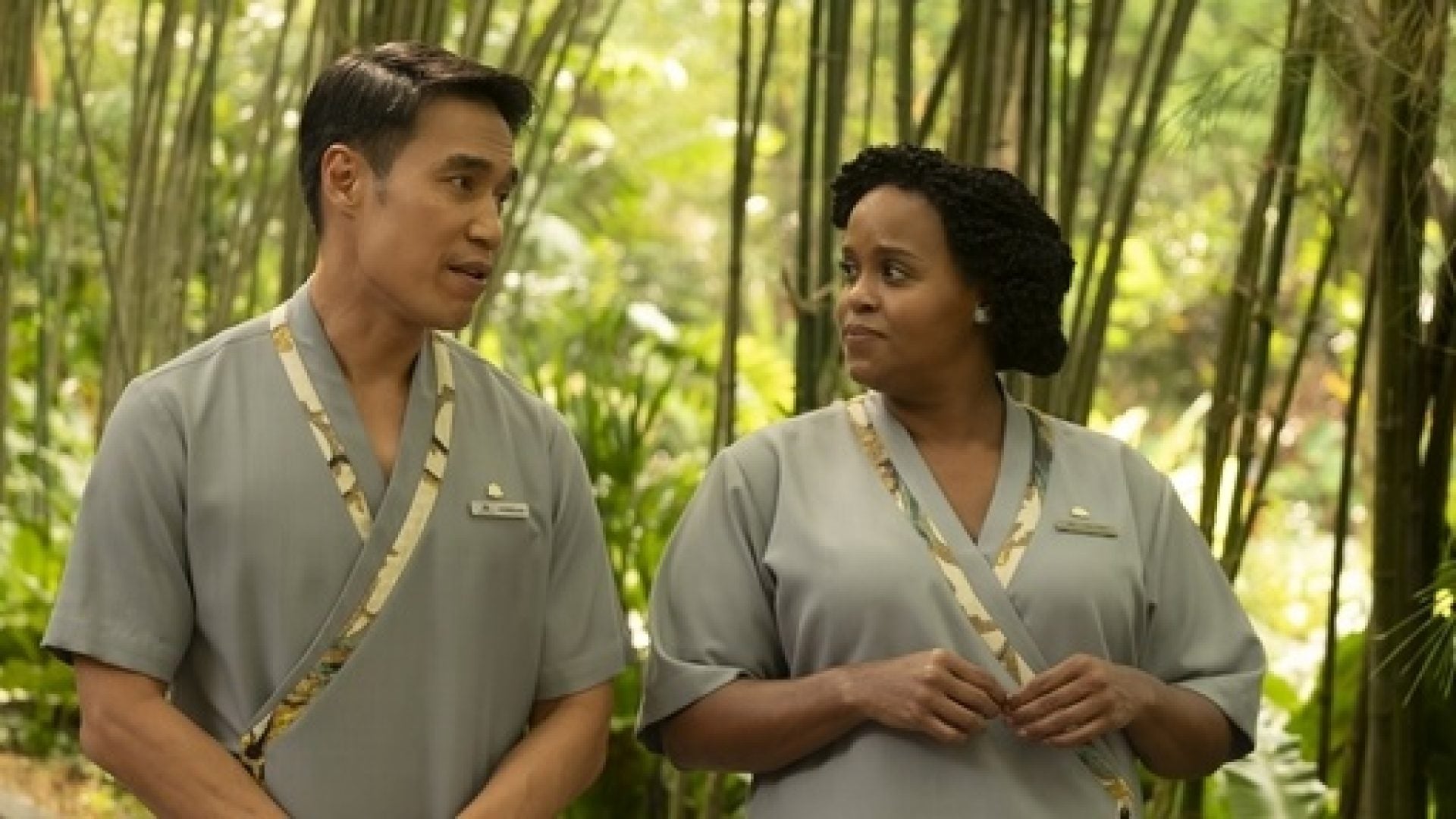
Article content The “buy Canadian” movement is surging due to Donald Trump’s tariffs and trade war. Getting patriotic with food and drink choices is straightforward in some categories, such as whisky made from Prairie-grown grains or cheese crafted from local milk. Chocolate is trickier since cacao (or cocoa) only grows near the equator.
Yet Canadians are among the world’s greatest chocolate lovers . And though there’s no such thing as entirely Canadian chocolate, these seven bean-to-bar companies are about as close as you can get. Bean-to-bar chocolate opens up a whole new world.

It offers a depth of flavour that simply doesn’t exist in industrial chocolate. Making it is a craft, and eating it is a delight. Oliver Koth-Kappus, co-founder of Kasama Chocolate in Vancouver, likens making bean-to-bar chocolate from cacao beans to distilling whisky from grains.
A chocolatier, on the other hand, is like a mixologist making creative concoctions with already-produced spirits. These internationally lauded bean-to-bar chocolate makers source their cacao with care through direct trade with farms, a trusted bean broker or a combination. Some are reconsidering aspects of their operations in light of the tariffs.
With commodity cacao prices reaching all-time highs, they’re already accustomed to paying many times more for higher-quality, ethically produced “fine flavour” beans. They work with each bean differently to bring out its character in the finished bar, and all seven ship their chocolate nationwide via their websites, making it even easier to “buy Canadian.” QANTU CHOCOLATE Elfi Maldonado and Maxime Simard can pinpoint the exact moment they became more than chocolate eaters.
In 2014, they paid their first visit to a cacao plantation, Alto El Sol, in northern Peru and were immediately captivated by the farmers’ passion. “We fell in love with them because they were talking about their cacao with light in their eyes, with their eyes shining,” says Simard. The farmers told the couple where chuncho (wild cacao) grew, and their research into rare Peruvian beans began.
Maldonado and Simard founded Qantu Chocolate in Montreal in January 2017, with direct sourcing from Maldonado’s native Peru at the heart of their business. They visit farms several times a year, meeting with farmers and seeing how they run their operations. “When we source, first of all, it’s admiration for the cooperative,” says Maldonado.
“Second is quality.” They select beans by hand, considering aroma, complexity and rarity. Then, they tailor their roasting process.
There are various types of cacao beans, just as there are different varieties of wine grapes and coffee beans, each with its own character. “If one bean is good if it’s roasted for one hour and the other for 10 minutes, we will do that. It’s not one recipe.
It’s each recipe is adapted to the bean,” says Simard. Maldonado describes the uniqueness of some of their “nano batches,” such as the 200 kilograms of cacao they get each year from farmer Demetrio Huaccre, which they use to make the 100 per cent First Time bar. A 30-kilogram shipment of another variety became the limited-release Hidden Treasure , its singularity reflected in the price ($49.
90 for a 50-gram bar). “For us, it’s not a problem that it’s only a small quantity.” Their attention to detail has paid off from the start.
In June 2017, Qantu’s first three bars won two gold medals and one silver medal at the Academy of Chocolate Awards in London, England. They’ve since received many other international honours, including three Golden Bean awards. “Some people will roast very high, so in the end, it will just taste chocolaty.
But in our case, when our bar tastes chocolaty, it’s because we failed dramatically to keep the personality of the bean,” says Simard, laughing. “When we taste the bean, it’s not chocolaty. It’s fruity.
It’s floral. It can have notes of spice. Everything we taste in the bean must also reflect in the bar.
” KASAMA CHOCOLATE Kasama means friendship, togetherness and camaraderie in Tagalog, making it a fitting name for Vince Garcia, Stefan Klopp, Oliver Koth-Kappus and Dominik Voser’s chocolate business. A decade ago, the roller hockey friends started making chocolate using cacao from Garcia’s family property in the northern Philippines. Today, they’ve won more than 70 international awards for the bean-to-bar chocolate they craft on Vancouver’s Granville Island — with friendships intact.
Before they made chocolate, Klopp and Koth-Kappus brewed craft beer. Over pints one day, Garcia showed his friends a photo of some fruits growing on a plot of land he had inherited. After realizing the fruits were cacao pods, not mangoes as they had initially thought, they asked Garcia to bring back some beans from his next trip so they could make chocolate.
Garcia’s father obliged, and their research began. Garcia says that playing to their strengths has been a big part of their success. “I’m the crazy dreamer.
Oliver is the optimistic one, very good at planning, very good at listening. Stefan’s the more pragmatic one — Oli is pragmatic as well — and Dom is a realist.” Sourcing has always been key, and today, they’re growing their own cacao in Cagayan, at the northern tip of Luzon in the Philippines, which should bear fruit in two to three years.
“There’s a lot of different varieties of cocoa beans, and they all have different flavours depending on that. Trying to source beans that have interesting or unique flavours and then bringing out those flavours is a big one,” says Koth-Kappus. In bars such as their award-winning 70 per cent Echague , they draw out the flavours of rare cacao beans grown and fermented in the town of the same name in the Cagayan Valley, including notes of roasted chestnuts, Black Forest cake and stout.
They like experimenting with their flavoured bars, adding other elements to the cacao. Kasama’s limited-release Lait De Chèvre is made with goat’s milk from B.C.
’s Shuswap region, and the recently launched Spring Awakening incorporates locally foraged spruce tips. Other bars feature Filipino ingredients, such as calamansi and jackfruit. Garcia says having direct access to a lesser-known chocolate region, the first outside Mesoamerica to cultivate cacao, has contributed to Kasama’s success.
And then there’s the personal connection. “I was born and raised in Canada to Filipino immigrants. Oliver’s parents and Stefan’s parents were German immigrants, and Dom’s parents are Swiss immigrants.
It’s a pretty good chocolate combination to have.” HUMMINGBIRD CHOCOLATE MAKER When Erica Gilmour was doing humanitarian aid work in Afghanistan, chocolate was one of the simple pleasures. “You could usually find some very stale Ferrero Rochers somewhere.
” She met her husband, Drew Gilmour, who worked for the United Nations there. When they decided to spend more time at home in Canada, the couple found inspiration in Haiti, where Drew saw cacao trees for the first time after the 2010 earthquake. Erica and Drew did a deep dive into chocolate: the process of making it and the pay inequity and labour issues plaguing the industry.
At the same time, they learned about the bean-to-bar movement and ordered some from Canadian forerunner Soma Chocolatemaker in Toronto. “It was a revelation because it’s not like anything we were used to having as kids, or even those stale Ferrero Rochers. It’s like a whole other food group.
” They started making chocolate in their basement “just for fun.” In 2012, Erica and Drew founded Hummingbird Chocolate Maker in Almonte, Ont., in the Ottawa Valley.
Since then, they’ve won more than 140 international awards, including the Academy of Chocolate’s Golden Bean in 2016. Nearly 700 Canadian retailers sell their chocolate, and they built a factory, store and café in 2022. For their single-origin bars, such as the 70 per cent Cap-Haïtien , they aim to stay true to the ingredients.
“We’re just adding organic cane sugar and a tiny bit of cocoa butter and trying to let the natural flavours of those cacao beans shine through.” Erica adds that each cacao has its own unique terroir. They’ll do 30 to 40 different roasts on a new bean to determine what they think its true flavour is and what they like.
Erica also enjoys playing with familiar flavours from childhood. “We love peanut butter cups, but we wanted something that tasted better, that wasn’t as sweet,” she says of Hummingbird’s six-ingredient version . “It doesn’t have any palm oil.
It doesn’t have any soy lecithin. So, keeping it simple.” Hummingbird sources cacao for its Golden Bean-winning Hispaniola bars from the Dominican Republic and buys beans from a group in northern Haiti — “which was important to us, because that was where the journey began” — Colombia and Uganda, and is committed to sustainable, ethical and humane production.
“We try to find really great cacao beans. We try to pay people a fair price for them, and we continue that relationship,” says Erica. “It’s good business for everyone.
” EVERTIDE CHOCOLATE MAKER “I’ve always been looking for the next chocolate bar,” says Frances Grant-Feriancek, a self-described chocolate explorer. Before she founded Evertide in Lower Sackville, N.S.
, Grant-Feriancek was a former chocolatier working as an administrative assistant. “I was the person in the office who always had chocolate in their desk. Everyone knew this.
And it was never one bar. It was usually several different kinds.” After reading about bean-to-bar chocolate, Grant-Feriancek sought it out and was hooked at first bite.
“It was like a light went off. It’s chocolate 2.0 — chocolate with tasting notes.
It’s more than just the chocolate note. There’s so much depth. Every bar is so completely different.
” During the pandemic, Grant-Feriancek experienced a period of “personal upheaval.” First, she lost her job of 14 years, and then her younger brother died unexpectedly. “It was a lot of turmoil, and you want to make a difference in your life.
You want your life to mean something. You want to affect change.” Grant-Feriancek spent all of 2021 building a business plan and doing research.
She renovated her husband’s garage, got it inspected and licensed, and waited for machines to be delivered. Because of supply chain issues, this happened later than she had planned. In 2022, Grant-Feriancek launched Evertide and started selling her chocolate.
As the only full-time bean-to-bar maker in Nova Scotia, Evertide has experienced 50 per cent growth annually. In 2024, Grant-Feriancek received her first honour: a silver medal at the International Chocolate Awards for her 75 per cent Pisa, Haiti bar . One of Grant-Feriancek’s favourite beans, Semuliki Forest , is farmed primarily by Ugandan women.
”Because they’re doing a bean-to-bar fermentation, they’re getting living wages.” She sees this as the cornerstone of bean-to-bar chocolate. Her bean broker pays farmers three to five times more than industrial chocolate makers would.
The gap narrowed with commodity cocoa prices hitting an all-time high in 2024, but bean-to-bar makers still pay considerably more for a higher-quality product. Located about 25 minutes from Halifax, Grant-Feriancek likes to keep Evertide as Atlantic-inspired as possible. “There’s so much romance in the North Atlantic.
” Besides her single varietals, she’s developing new recipes for bars featuring local blueberries, haskaps (“kind of like blueberries, elongated, more intense tasting”) and for Christmas, seaweed and roasted sesame seeds. Guiding people as they try bean-to-bar chocolate for the first time is a big part of what she does at shows and farmers’ markets. “Seeing their faces light up when they taste what I’m describing, it’s 100 per cent what I want.
If I didn’t get that feedback, the joy wouldn’t be there.” DESBARRES CHOCOLATE Erik Hansen grew up a dark chocolate lover in Ottawa. Raised by parents from the Maritimes, boxes of Delecto chocolates from Ganong in St.
Stephen, N.B., marked each Christmas.
“Always fun to get something made in Canada, even back then, more so now,” says the co-founder of DesBarres Chocolate in Uxbridge, Ont. After experimenting with friends-and-family chocolate, Erik, who worked in biotechnology, and his partner, Ariane Hansen (an architect with a background in chemistry), turned their shared passion for bean-to-bar chocolate into a business. Since they started DesBarres in 2015, they’ve won more than 50 international chocolate awards, and Erik is pleased with their success.
“It’s just the two of us working away in our basement with some good equipment. A lot of it’s secondhand, some of it new. But any makers that pay attention to what they’re doing can make fine chocolate in pretty much any location in the world if you take your time.
” Erik says that 10 years in, they’re educating almost as many people about bean-to-bar chocolate as they did at the beginning because new people are interested in it every year. “You’re sourcing your beans. You’re paying ridiculous amounts.
Transportation is killing you, but we’re all still doing it because you make this great thing, and you’re rewarded by the look on people’s faces when they taste it the first time, and they go, ‘Wow! It is different.’” With a limited number of suppliers and a growing number of bean-to-bar makers, Erik says it can be hard to find beans others aren’t using, but they appreciate the opportunities when they come. Through one of their brokers, they bought 100 kilograms of cacao beans from Garcia Estate , a small plot farmed by Joseph Garcia in Trinidad.
“We were thrilled to get that small of a micro lot from that small a geography, so we knew exactly where those beans were coming from,” says Erik. “That’s what we love to do. We love experimenting and seeing what kind of flavours we can draw out from that.
” Many of the makers featured in this article mentioned a sense of community — due in no small part to two events Erik co-founded. Inspired by The Northwest Chocolate Festival in Bellevue, Wash., Erik started The Winter Chocolate Show with Paola Giavedoni, owner of The Candy Bar in Toronto, and The Ottawa Chocolate Show with Joanne Mutter, owner of JoJo CoCo in Kanata, in 2019.
“Canada does have some of the world’s best chocolate. You don’t have to go to Switzerland. You don’t have to go to Belgium.
” SIRENE CHOCOLATE Taylor Kennedy went from working in photography at National Geographic to launching Sirene Chocolate in his Victoria backyard workshop, a couple hundred metres from the ocean. “It was an easy switch because I work closely with the farms themselves. There’s lots of cultural and geographic interest based on the humans growing the cocoa beans.
” Since Kennedy founded the company in 2013, Sirene has won more than 50 awards in international competitions. Flavour is the first thing he looks for in his chocolate, which starts with sourcing the beans. “I liken it to a January grocery store tomato versus an August farmers’ market tomato,” says Kennedy.
“The starting ingredient will make a big difference on the flavour. So, I’m searching for the highest quality. And then, of course, the ethics have to be there.
They have to be a good group of farmers with good practices.” Kennedy aims to make the location shine in his chocolate. This is especially true of Sirene’s dark chocolate bars, which are made with beans from countries including Bolivia, Tanzania and Uganda.
“But then lots of people like flavours, and that’s great. That’s a big part of enjoying chocolate — enjoy what you like.” Landing on the kind of flavoured bars he wanted to make took some time.
The answer came to him on a trip to a farm in Alta Verapaz, Guatemala. They were having a “really goofy day,” Kennedy recalls. The Q’eqchi’ Maya farmers kept saying “ch’abil,” which his interpreter explained as “basically a fun day.
” Kennedy loved the word and told the farmers that the next bar he made with their beans, he would call Ch’abil. He then noticed plants growing in the shade of the cacao trees, which turned out to be cardamom the farmers harvested as a secondary source of income. For his multi-award-winning Ch’abil bar , Kennedy uses cacao beans and cardamom from the Q’eqchi’ Maya farmers.
“It’s by far my most popular bar, just based on flavour.” Other bars incorporate local elements, such as Coastal Rainforest , which features kelp and red currants, and Fleur de Sel , combining cacao from Semuliki Forest, Uganda, with salt from Vancouver Island Sea Salt on Oyster Bay, halfway between Comox and Campbell River. “I try to have any flavours or anything that’s in the bar, either pointing at the location where the cocoa beans come from or my own backyard here.
” AVANAA CHOCOLAT Former geologist Catherine Goulet was inspired to start Avanaa Chocolat nearly a decade ago after seeing artisans at work in Oaxaca City, Mexico. “Stepping into one of these workshops, we realized how we knew absolutely nothing about chocolate making (even though we ate chocolate every single day),” she writes. Goulet travelled to cacao plantations around the world, including Indonesia, Colombia and Peru, before launching Avanaa in Montreal in 2016.
Head pastry chef Isabella Geddes has worked there since 2019 in various roles and met Goulet in her work as a chocolate sommelier. “From the beginning, I was visiting her and tasting her chocolate,” says Geddes. “When I discovered (bean-to-bar chocolate), I loved the humanistic approach,” Geddes recalls.
“Cacao has such an effect worldwide on farmers and finances and socially, on women. There are so many aspects that you can be interested in. The cooperatives that Avanaa chooses to work with are also specific to our values, and that’s pretty common in bean-to-bar chocolate.
” With the cost of commodity cacao rising, Geddes says more cafés and restaurants, including Vin Mon Lapin (voted Canada’s best restaurant in 2024), are choosing to work with their drinking chocolate and bars . “Chefs are one of the big new audiences we’re seeking out,” she adds. “We’re seeing restaurant chefs saying, ‘If I’m going to pay double for my industry chocolate, maybe I should pay a little bit more for bean-to-bar chocolate.
’” Geddes feels that the third-wave coffee movement forged a path for bean-to-bar chocolate by exposing consumers to the vocabulary. After all, there are many similarities, including origins, roast profiles and tasting notes. Awareness may be growing, but education has been key from the start, says Geddes.
People are often surprised that chocolate can have unique flavours because they’re accustomed to eating commodity chocolate. “That cacao is a low-quality cacao. They’ll often over-roast it, so the flavours are very one-note.
When you start to taste with people, it makes them stop to taste, not just eat chocolate.” Geddes says they’re passionate about achieving the highest quality possible at Avanaa. They don’t assume a recipe because they roasted the same cacao four months ago but redo their tests every season.
The staff tastes the chocolate daily. “(We strive) to have something worth that $15 — to have people be happy to eat maybe a little bit less chocolate but take the time to savour it. And we give them something to savour.
” Our website is the place for the latest breaking news, exclusive scoops, longreads and provocative commentary. Please bookmark nationalpost.com and sign up for our cookbook and recipe newsletter, Cook This, here .
.















